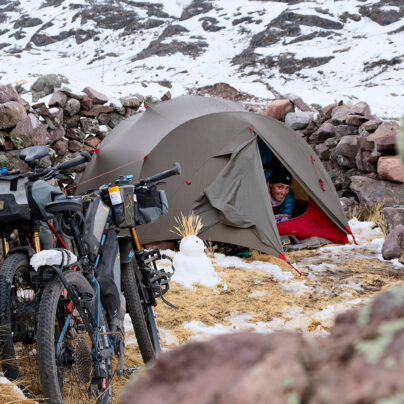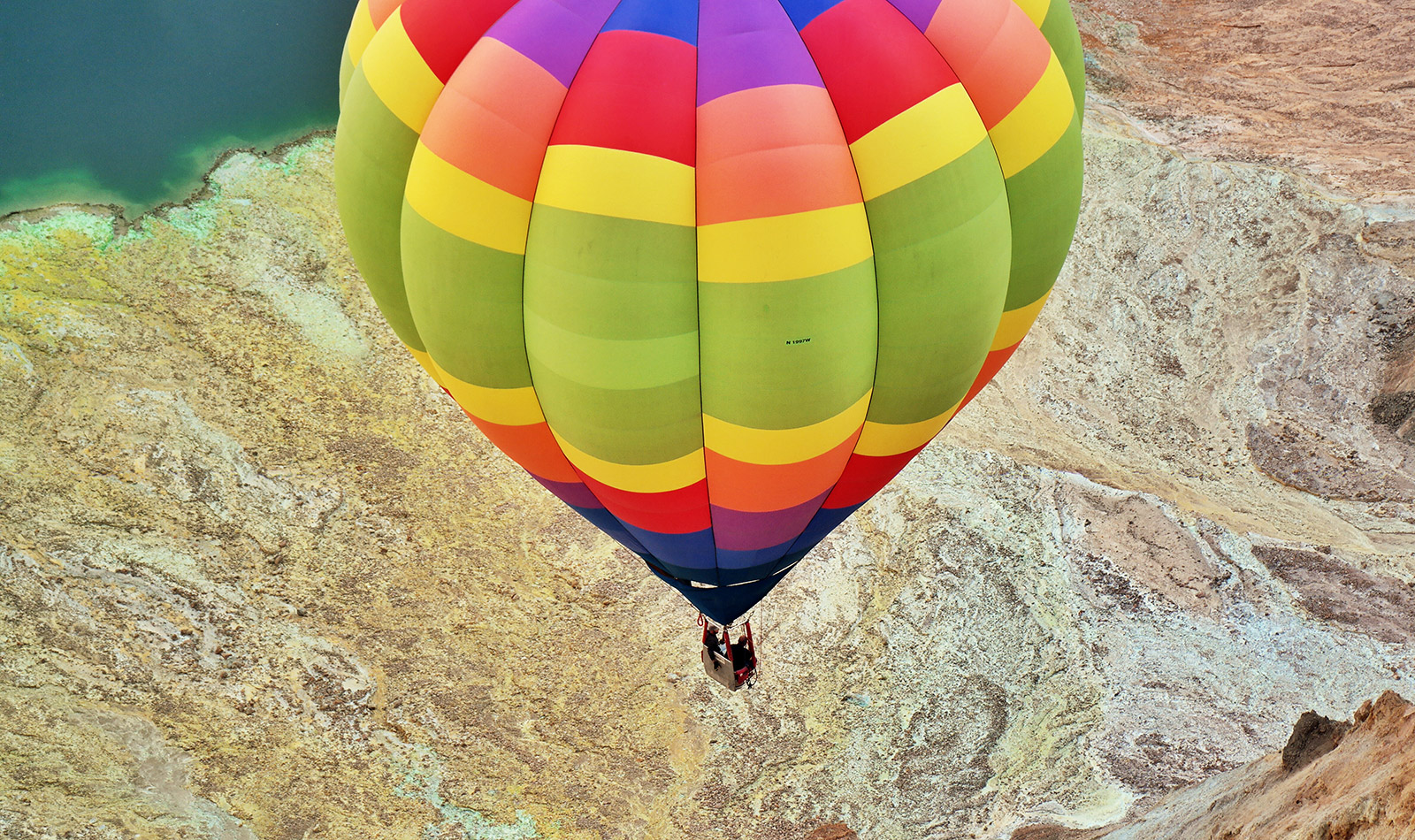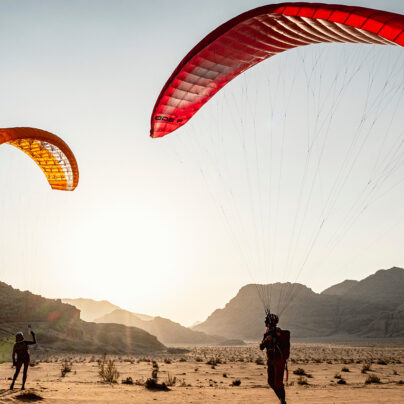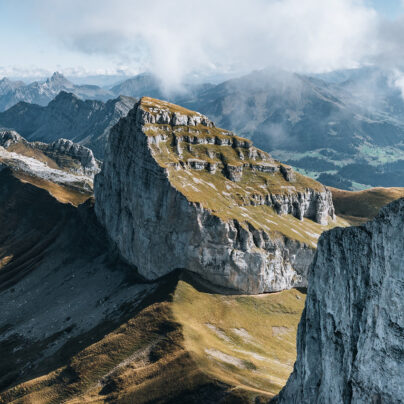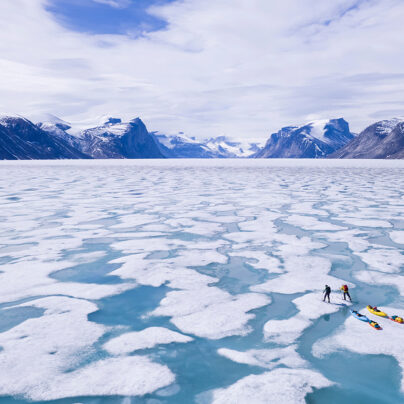Deep Flight
A Hot Air Balloon Journey Below the Earth's Surface
Joe Zvada
Balloons were once cutting edge technology, the first craft to take humans into the sky. The principles are still the same, hot air rises and balloons go with the wind. Our only means of control are to ride invisible layers of directional air currents to “steer” to a desired location. Large international competitions challenge the world’s best pilots to precision flying tasks with much made of the winners. But it’s not only prize money and world rankings that pilots chase, adventure flying attracts a small but growing number of pilots to apply their skills in less than hospitable environments.
In the pre-dawn Arizona darkness I’m joined by the team from Zing Aerosports, my host and expedition partners for my latest adventure flight. The objective, to join a team of six balloons on a flight into a deep depression in the Earth – analysed via satellite images for weeks in advance of the flight. The hole is an abandoned copper mine, roughly 1,000ft deep and over half a mile wide at the surface, located in the Arizona desert some sixty miles south of Phoenix.
Our intention was to descend to the bottom and slowly ascend the wall, immersing ourselves in the atmosphere and accessing the depths that would otherwise be inaccessible, from a perspective only possible from a balloon. We would need ideal conditions to pull it off.
We chose a launch site south of the mine and ascended into a spectacular sky of red sunlight reflecting off high stratus clouds before an overwhelmingly blue sky built in. Sunrise from a balloon is remarkable and no matter the mission of the flight it’s hard not to find yourself lost in it, even if for only a moment.
We levelled off at 1,200ft above the ground to catch the wind that would take us to the mine. The mine sits in flat desert land and from our distance and altitude it was hard to distinguish. It was only as we fly closer that the enormity of the space came into view. The flat desert gave way to sheer cliffs in a matter of seconds, yielding no significant terrain cues as you might get when approaching a natural canyon. For us it felt as if the earth opened up an abyss right in front of us. It wasn’t until we were almost directly above that we could see the nethermost depths of the mine.
Our intention was to descend to the bottom and slowly ascend the wall, immersing ourselves in the atmosphere and accessing the depths that would otherwise be inaccessible
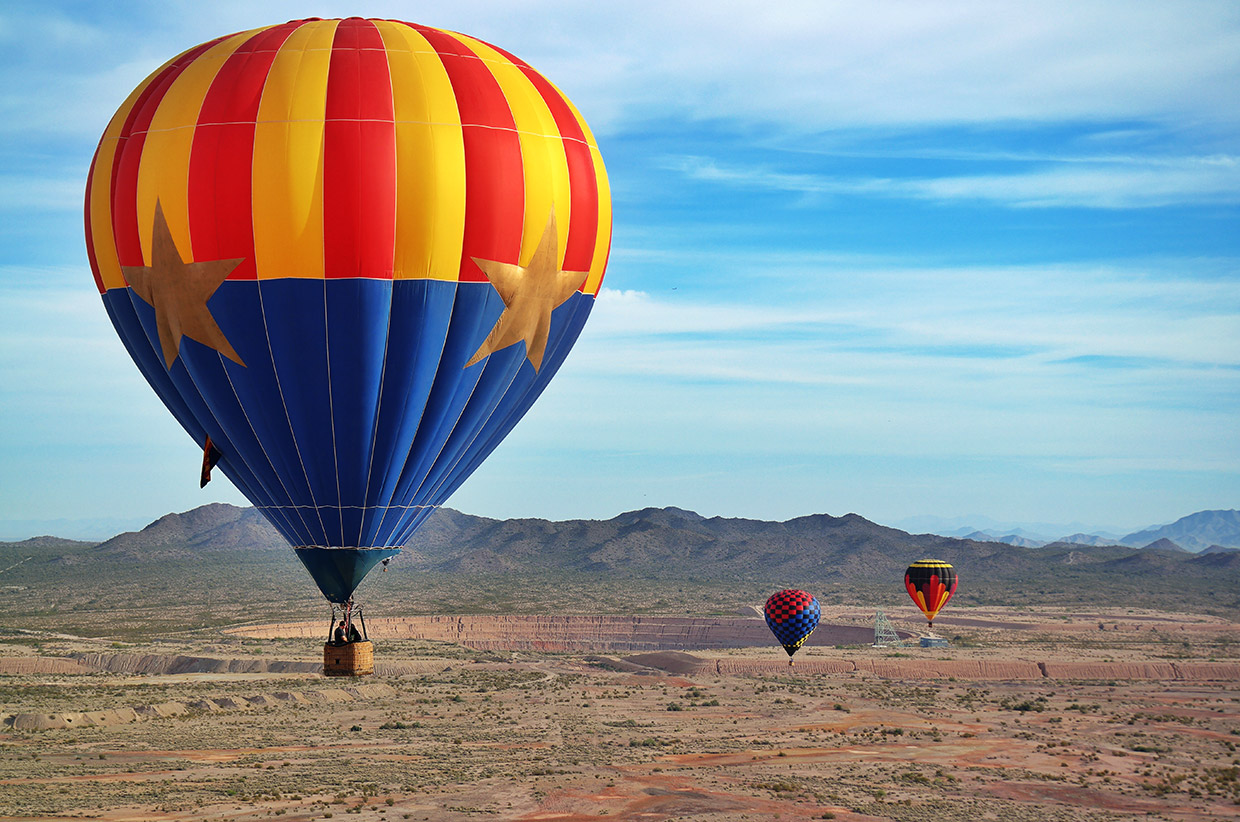
Almost a thousand feet below the surface, we were flying in a calm circular flow around the mine. This depth was our goal, but also our most vulnerable point of the flight. A malfunction with the aircraft would spell certain peril
In a slow smooth descent it took about five minutes to reach rock-bottom. The rim of the mine felt as if it was encircling around us as we got deeper, as if we were in a dome instead of an open pit. We passed into the shadow of the walls about halfway down, our eyes adjusting to the brightness so that the vastness of the space could suddenly be appreciated. The ledges cut into the rock that make up the walls were themselves well over 50 feet in height. Colorful, crumbling rock on the far side caught the morning sun making for a wonderful display any geologist would appreciate. The dark green sludge pond at the bottom of the abyss held its own beauty, contrasting with the bright oranges and reds in the rock.
Almost a thousand feet below the surface, we were flying in a calm circular flow around the mine. This depth was our goal, but also our most vulnerable point of the flight. A malfunction with the aircraft would spell certain peril. Neither the toxic pond nor the eroded ledges of the wall were safe options for landing. Even if we somehow were able to bring the craft down safely, a helicopter rescue would be needed as hiking up the steep, crumbling walls seemed a forboding option. These scenarios stood only as hypotheticals, the aircraft performed faultlessly throughout the flight.
As the sun slowly filled more of the mine and our fuel tanks depleted, a safe departure grew prudent. We initiated a slow ascent following the incline of the wall, just inches from the face. Nearing the top we increased our ascent speed to punch through the flowing air above the surface and avoid it pushing us back down into the wall. Safely out, the perspective directly above the mine provided a momentary distraction from difficult landing before us. A small, but noticeable, feeling of acrophobia snuck in as we floated above the mine. It felt as if we were on the edge of a cliff rather than in a balloon. A notable feeling as the motionless feeling of a balloon flight usually calms a person’s fear of heights not spawn it.
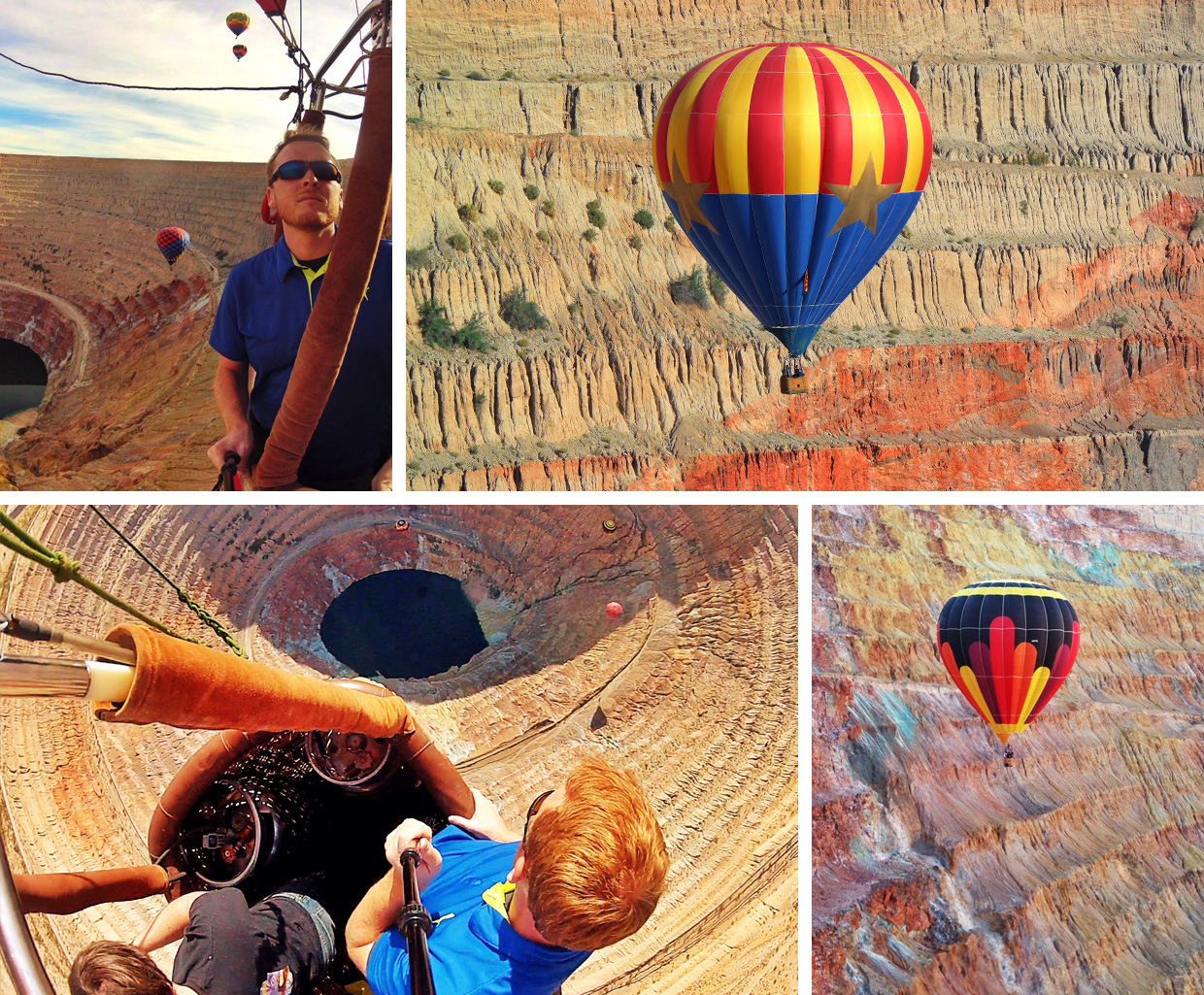
In the rush of the accomplishment, we had a few moments to reflect on the flight as we stood in the desert awaiting our rendezvous with the chase crew. Then, and to this day, the images of the mine echoing through my mind are beautiful: not at all what I had expected to find in an abandoned man-made scar on the earth. And while I still don’t excuse the mining technique used nor the decision to leave it abandoned, there is no denying the beauty, at least on this day, of the bright red layers of rock catching the morning sun as viewed from a hot air balloon.
Joe Zvada is a hot air balloon adventurer living in South Texas USA. He is an internationally recognised competition pilot and a perennial member of Team USA. He will compete later this year in the World Air Games in Dubai. He believes ballooning is at it’s purest when piloting skills and the challenge of adventure meet as it did on this flight.
Website: BalloonPong.com
Facebook: facebook.com/joe.zvada
Instagram: @thezvada
Watch the video from this flight here: vimeo.com/90283277
